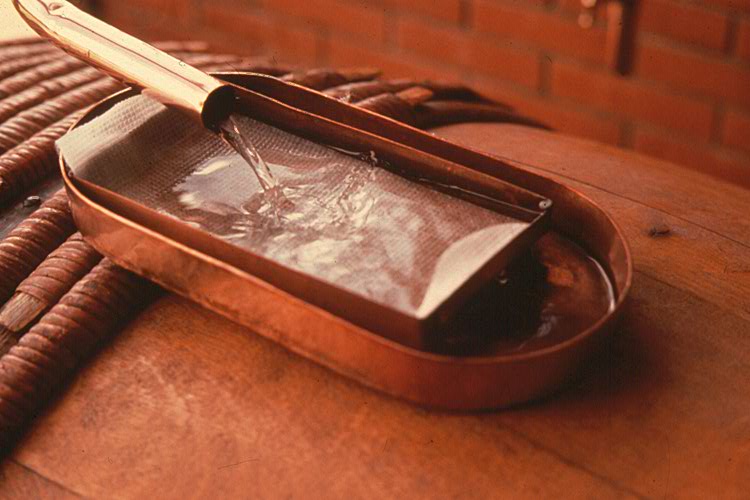Crafting Eau-de-Vie: A Journey through French Fruit Brandy
Eau-de-vie, a term that translates to “water of life,” is a clear, colorless fruit brandy that is popular in France and other parts of Europe. These spirits are distilled from fermented fruit juice, such as grapes, pears, raspberries, cherries, or plums. Let’s explore the fascinating process of creating eau-de-vie and the unique characteristics of Cognac, one of the most famous beverages made from of eau-de-vie. We will also delve into the role of the Bureau National Interprofessionnel du Cognac (BNIC) in regulating the production of Cognac and other eaux-de-vie.
The Distillation Process
The distillation of eau-de-vie is a delicate process that involves isolating the alcohol produced by the fermentation of sugars found in fruit. The key to this process is understanding the volatility differences of the components, which allows for the separation of the volatile substances that make up the main features of the bouquet.
In the case of Cognac, the distillation process is strictly regulated by the BNIC. The process is divided into two stages: the first distillation (la première chauffe) and the second distillation (la bonne chauffe). The first distillation takes place in a copper pot still and produces a low-alcohol liquid called brouillis, which is then distilled a second time to create eau-de-vie.
The Role of the Bureau National Interprofessionnel du Cognac
The Bureau National Interprofessionnel du Cognac (BNIC) is a French organization that oversees the production, promotion, and protection of Cognac. The BNIC’s primary responsibilities include setting and enforcing the standards for Cognac production, ensuring the authenticity and quality of the product, and promoting the brand on a global scale.
The BNIC provides guidelines on the types of grapes that can be used in Cognac production, the distillation process, and the aging requirements. For example, Cognac must be aged in oak barrels for a minimum of two years, and the final blend must contain a mix of eaux-de-vie, usually from different vintages and ages.
Cognac: A Unique Blend of Eaux-de-Vie
Cognac is a type of eau-de-vie that is made from a specific blend of grapes grown in the Cognac region of France. The grapes used to make Cognac are Ugni Blanc, Folle Blanche, and Colombard. The wine produced from these grapes is high in acidity and low in alcohol, which makes it ideal for distillation.
The aging process is a critical component of Cognac production. During the aging process, the eau-de-vie is stored in oak barrels, which impart flavors and color to the spirit. The length of time that the eau-de-vie spends in the barrel determines its classification: VS (Very Special) Cognac is aged for at least two years, VSOP (Very Superior Old Pale) is aged for at least four years, and XO (Extra Old) is aged for at least ten years, and XXO is aged for a minimum length of 14 years years.
The blending process is also an essential part of Cognac production. A master blender carefully selects eaux-de-vie from different ages and barrels to create a unique and balanced flavor profile. This process ensures that each bottle of Cognac has a consistent taste and quality.
Eau-de-vie is a fascinating and diverse category of spirits that offers a wide range of flavors and aromas. The production process, from the fermentation of fruit juice to the aging and blending of eaux-de-vie, is a delicate and intricate process that requires skill and expertise. In the case of Cognac, the strict regulations and standards set by the BNIC ensure that the final product is of the highest quality and that the tradition and heritage of this iconic spirit are preserved.



